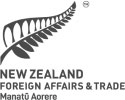Weekly Global Report:
Trade and Economic Updates
Highlights
United Arab Emirates and New Zealand conclude FTA negotiation
- New Zealand and the United Arab Emirates have concluded negotiations on a free trade agreement, also known as a Comprehensive Economic Partnership Agreement (CEPA). This is New Zealand’s first free trade agreement in the Middle East, opening new opportunities to grow and diversify exports in a dynamic, high-value market. The agreement was concluded in just over 4 months following the launch of negotiations on 7 May this year, making this New Zealand’s fastest-ever trade agreement negotiation. This agreement will eliminate duties on 98.5 per cent of New Zealand’s goods exports to the UAE on entry into force. Removing duties on New Zealand products will benefit New Zealand’s significant dairy, red meat, horticulture and industrial product exports. To read more, go to www.mfat.govt.nz/NZUAECEPA.
OECD updates its global Economic Outlook
- The Organisation for Economic Cooperation and Development (OECD) released its global Economic Outlook(external link) on 25 September. Global growth is expected to stabilise with a projection of 3.2% in 2024 and 2025, after 3.1% in 2023. Global inflation has continued to decline, with four fifths of OECD countries at or near target headline inflation targets. Headline inflation in G20 countries is projected to fall from 6.1% in 2023, to 5.4% in 2024, and 3.3% in 2025. Core inflation in the G20 advanced economies is anticipated to ease from 4.2% in 2023 to 2.7% in 2024 and 2.1% in 2025. Inflation in the emerging-market economies is projected to remain generally higher than in the advanced economies, while also easing gradually, however with exceptions.
Americas
US reviews its GDP estimate for a stronger showing
- Annual revisions to US national accounts were released last week and showed that the US has recovered even more strongly from the pandemic than initially thought. US real gross domestic product (GDP) rose 3% year-on-year in the second quarter, “primarily reflecting increases in consumer spending, inventory investment, and business investment,” the US Bureau of Economic Analysis said. Better than expected economic data shows growth was revised up in 2021 (6.1% vs 5.8% in the initial estimate), in 2022 (2.5% vs 1.9% in initial estimate) and 2023 (2.9% vs 2.5% in initial estimate), painting a picture of consistent and robust recovery. The US’ strong performance comes as data shows that all G7 economies are now above pre-Pandemic levels.
South and Southeast Asia
Singapore and India sign Comprehensive Strategic Partnership
- An official visit by Prime Minister Modi to Singapore on 4-5 September saw both sides agree to elevate the Singapore-India bilateral relationship to a Comprehensive Strategic Partnership, with six pillars of cooperation identified covering sustainability, digitalisation, skills development, healthcare and medicine, advanced manufacturing, and connectivity. Significantly, there was also a Memorandum of Understanding on semiconductor ecosystem partnership, which will help India’s burgeoning semiconductor industry access talent and expertise from a decades-old industry in Singapore. Prime Minister Modi’s visit will see a further elevation in an already extensive bilateral relationship underpinned by cultural connections and strong architecture.
Australia
Australia and New Zealand CER meeting
- Trade Minister Todd McClay hosted his Australian counterpart Don Farrell for the annual Closer Economic Relations (CER) Trade Ministers’ meeting in Rotorua over the weekend. The Ministers also met a number of New Zealand and Australian businesses, facilitated by the Australia New Zealand Leadership Forum.
- “CER is a gold-standard agreement underpinning $32 billion in annual trade. Minister Farrell and I discussed how we can continue to build on its success to grow trade and investment between our countries and improve conditions for our exporting businesses around the world,” Minister McClay said.
- “We agreed on the importance of facilitating trans-Tasman trade, including through the work under way to strengthen the operation of the Trans-Tasman Mutual Recognition Arrangement and enhance regulatory coherence. We discussed the benefits of addressing non-tariff barriers including restrictions on structural timber exports.” We also had a productive exchange of views on how we can pursue our shared interests on a range of international agreements and issues including the WTO, CPTPP and other regional trade initiatives.”
Pacific
Fiji, New Zealand, Australia, trilateral trade meeting held to celebrate Pacific partnership
- Trade Minister Todd McClay also hosted Fijian Deputy Prime Minister and Trade Minister Hon. Manoa Kamikamica and Australian Trade Minister Don Farrell for trilateral trade talks in Rotorua over the weekend. You can find the New Zealand-Australian-Fiji joint statement here(external link).
- “The meeting was an opportunity to understand how we can all best support each other. As friends and partners, we want to increase the benefits of trade for the people of Fiji and the broader region,” Mr McClay says. “This is especially important given Fiji’s Prime Minister Sitiveni Rabuka and New Zealand’s Prime Minister Christopher Luxon have set an ambitious goal to hit NZ$2 billion of two-way trade by 2030.”
- The trilateral talks included discussion of the Pacific Agreement on Closer Economic Relations Plus (PACER Plus) and how it could support investment and jobs, improve living standards, and deepen Pacific trade connections. Ministers also addressed Australia, New Zealand, and Fiji’s collaborative efforts to encourage World Trade Organisation members to ratify the Fisheries Subsidies Agreement, which encourages ethical fishing practices.
More reports
ASEAN: regional economic outlook
Northern Sweden's Green Industrial Revolution
Viet Nam: renewable energy market
Iceland: green transition & renewable energy
Previous global economic round-ups can be found here(external link).
View full list of market reports.
If you would like to request a topic for reporting please email exports@mfat.net
External links
The following links may provide useful information to businesses:
NZTE’s website(external link) and their myNZTE(external link) provides a range of insights and tools available to support New Zealand exporters.
The Treasury releases a weekly economic update(external link) every Friday. Stats NZ has published a data portal(external link) with near real-time economic indicators.
MBIE publishes a sector reports series(external link) which provides regularly updated reports on all industry sectors that make up the New Zealand economy. These include official economic data and the challenges and opportunities that face New Zealand’s industry sectors.
Business.govt.nz(external link) provides tools and advice from across government to save small businesses’ time and help make the business a success.
MFAT has created a tariff finder(external link) which is designed to help goods exporters and importers maximise benefits from New Zealand’s Free Trade Agreements and compare tariffs in 136 other markets.
The all of government Trade Barriers(external link) website can be used to register any trade barriers experienced or issues exporting to an offshore market. Queries can be sent via the website or through the MFAT Exporter Helpline 0800 824 605. Enquiries will be sent to the government agency best placed to answer.
Tatauranga Aotearoa Stats NZ provides official data on the value of New Zealand’s exports and imports of both goods and services, by commodity type via the New Zealand Trade Dashboard(external link). This interactive dashboard is updated every quarter and allows for filtering by country and by commodity type.
Feedback
We welcome feedback from New Zealand exporters on this report and invite requests for reporting from New Zealand’s network of Embassies and High Commissions. If you would like to subscribe to this weekly update, go to our subscription page(external link) or email us at exports@mfat.net.
Sign up for email alerts
To get email alerts when new reports are published, go to our subscription page(external link)
Learn more about exporting
New Zealand Trade & Enterprise’s comprehensive market guides(external link) cover export regulations, business culture, market-entry strategies and more.
Disclaimer
This information released in this report aligns with the provisions of the Official Information Act 1982. The opinions and analysis expressed in this report are the author’s own and do not necessarily reflect the views or official policy position of the New Zealand Government. The Ministry of Foreign Affairs and Trade and the New Zealand Government take no responsibility for the accuracy of this report.

